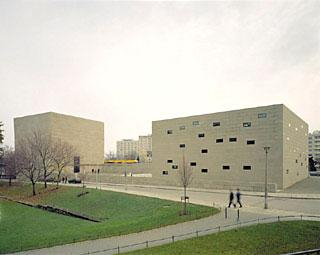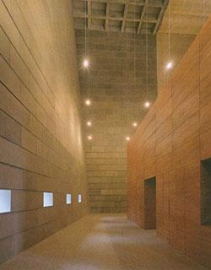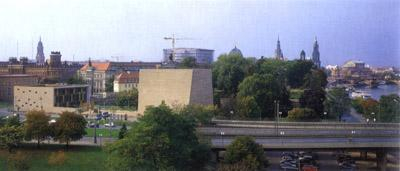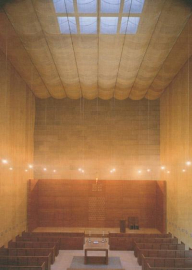Dresden Synagogue
Dresden is characterised by two acts of destruction: Gottfried SemperŽs synagogue in the Reichskristallnacht on November 9 1938 and the entire historical city on February 13 and 14 1945 by Allied bombings. Although the destructions are historically linked, the architectural consequences could not be more different.
On the one hand, Dresden reproduces its historical monuments (like the Frauenkirche as the most emblematic reconstruction), establishing a false continuity and a problematical pretension of architectural stability. On the other, the new synagogue represents an attempt to investigate the conflict between stability and fragility, the permanent and the temporary, the temple and the tabernacle.
Inserted into the sloped topography of the site, a central courtyard serves as a connecting element between the various uses of the synagogue and the community centre. Physical coherence is maintained by the use of a single material throughout (pre-cast concrete stones with sand aggregates). However, each building has a character of its own. The synagogue is a concentrated place of worship and meditation, its structure is related to the Elbe River and becomes part of the Dresden skyline. The community centre alludes to the urban fabric and creates a new entrance situation to the centre of the city.
Exploring the implications of stability and fragility, the architecture of the synagogue is characterised by material duality: a monolithic structure of precast concrete stones and an interior metallic textile structure. The twisting stone configuration of the synagogue follows the geometry of the site and fulfils the requirement of orientation towards the east. The complex, curvilinear volume is based on a simple, gradual shift of 41 orthogonal layers, formed by 120 x 60 x 60-cm elements.
In contrast to the monolithic structure, the interior of the synagogue is framed by a smooth metallic textile.




